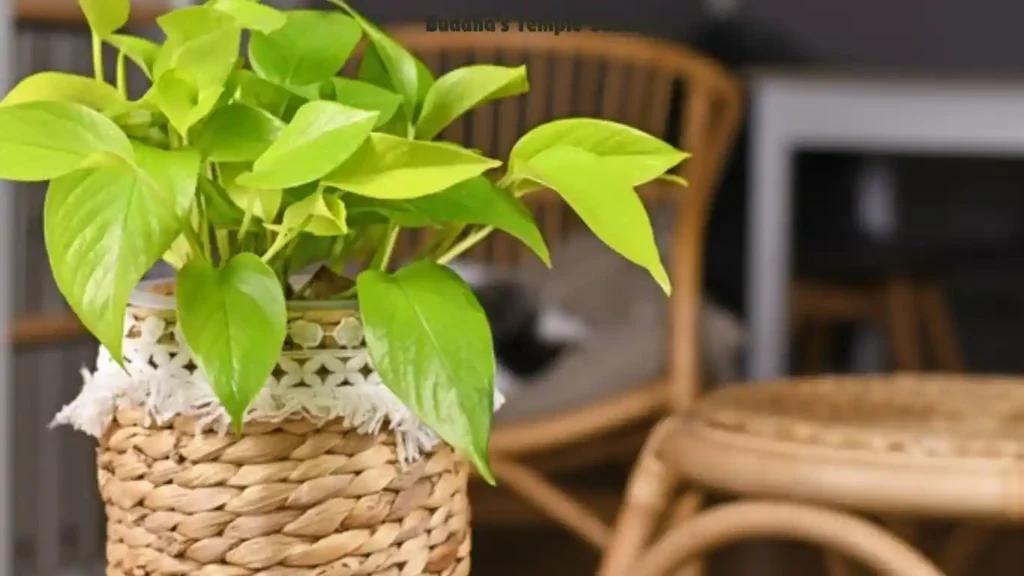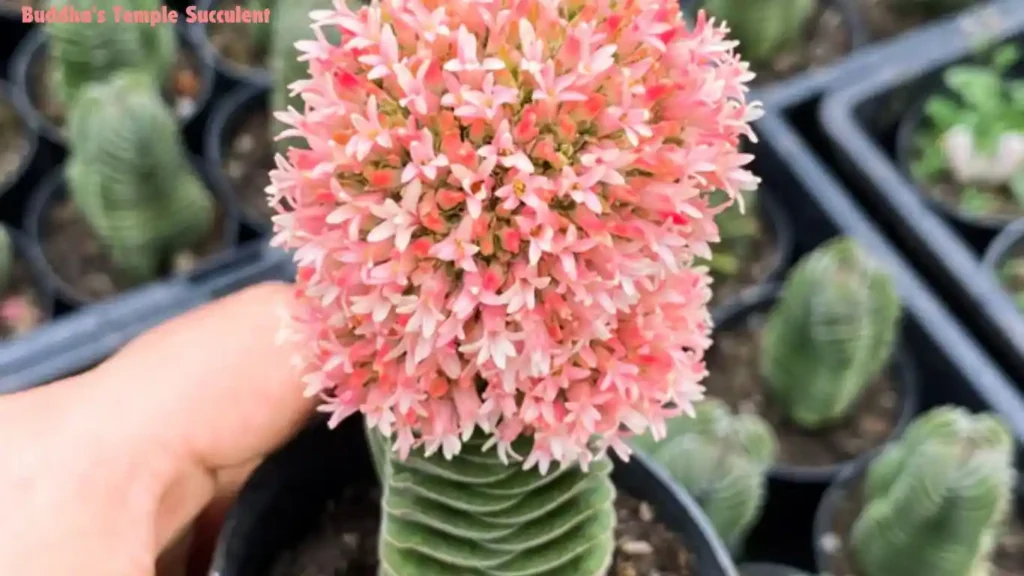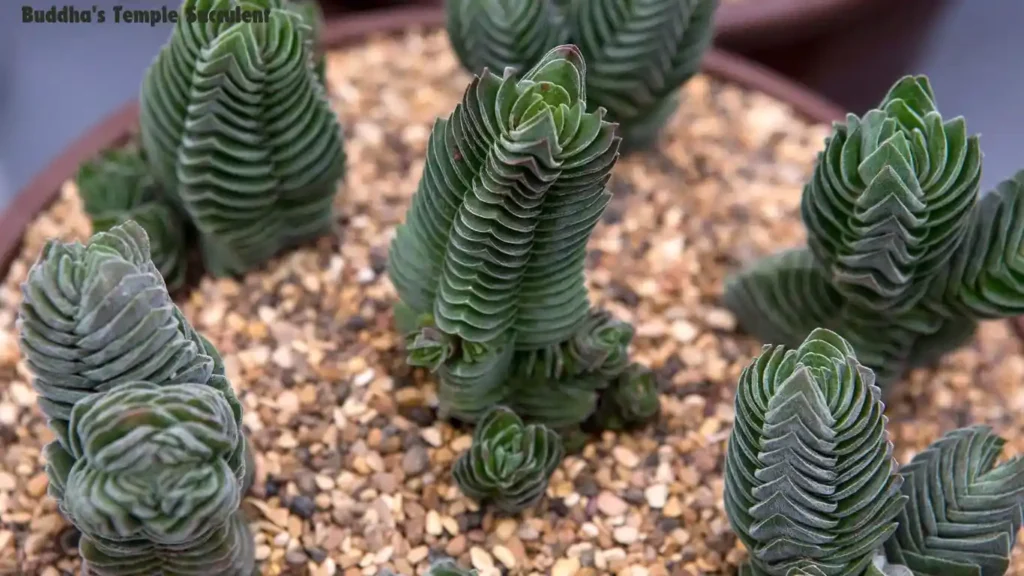How to Grow Best Buddha’s Temple Succulent History & Qualities
Buddha’s Temple Succulent, experimentally known as Crassula ovate ‘Gollum,’ is a special and charming plant that has acquired ubiquity among beginner and shared landscapers.
With its specific formation and usual importance, this pleasure has turned into a most loved conclusion for indoor and outside spending the same.
Origins and History
The Origins of Buddha’s Temple Succulent: The experimentally known as Crassula ovata ‘Gollum’, has its bases in the tough settings of South Africa.
This strong plant grows in bone-dry conditions, where it has adapted to survive unforgiving cases with little water and supplements.

The name “Buddha’s succulent” comes from the individual state of its leaves, which look similar to the bending fingers of the hand in specific varieties.
This unique component has seen the clever minds of landscapers and lovers around the world, adding to the charm of this enamoring delicious.
Social Significance
Across societies, succulents hold symbolic importance and social importance. In Chinese custom, they are respected for their connection with growing and overflow, frequently used in Feng Shui techniques to draw in certain energy and much into homes and organizations.
Original Foundation: The development of Delicious goes back hundreds of years, with proof of its utilization in traditional medicine and rigid traditions.
Antiquated products respected succulents for their mending properties and valued them as images of life and essentialness.
As shipping lanes opened and societies mixed, like hunted down their direction into greenhouses and families all over the planet.
Their versatility and low care conditions agreed on their famous conclusions for involved finishing, where they keep on growing today.
Actual Qualities
Formation and Structure: This is prestigious for its unique build and impressive structure. Its extended, cylindrical leaves twist internally, making a dazzling design that looks like the effortless bends of a hand.
The leaves are glowing and jade green for certain varieties, including red or orange tips, counting a pop of type to its general technique.
Product Examples: Right at home, can arrive at levels of up to two feet, shaping thick groups of vegetation that flood smoothly.
At the point when filled in holders, its development is much of the time more minimal, making it an optimal conclusion for little spaces and indoor nurseries.
However, of its humble size, this treat is viewed for its unique presence and design magnificence.
Really focusing on Buddha’s Temple succulent
Optimal Growing Events: To guarantee the well-being and imperativeness of, giving it the ideal developing conditions is fundamental.
This versatile plant flourishes in well-depleting soil that copies its regular living space, permitting an abundance of water to stream unreservedly and forestalling root decay. Moreover, it needs a lot of light to fuel its growth and keep up with its vibrant touch.
Daylight Conditions: Place your, where it can get good daylight over the day. While it can take some shade, extended exposure to low light events might bring about leggy evolution and loss of tinge.
Keep back nothing six hours of unusual daylight daily to keep your taste blissful and sound.

Watering Requirements: One of the most well-known botches, while focusing on succulents, is overwatering. This is no exception — it likes to be watered sparingly, allowing the dirt to dry out totally between waterings.
This emulates the plant’s regular natural surroundings, where it gets rare rainfall and depends on putting away water supplies to make expected.
Soil and Training Conditions
Pick a well-depleting conditioning blend explicitly planned for succulents and desert plants. Keep away from heavy, moisture-retentive soils, as they can start waterlogged roots and infectious diseases.
When repotting your, like a holder with waste starts to keep water from collecting at the base.
Spread and Propagation
Methods for Space: It can be effortlessly applied through different methods, allowing you to grow your assortment or offer your love for succulents to loved ones.
Whether you favor leaf cuttings, stem cuttings, or division, there’s an increased process practical for each landscaper’s expertise level.
Leaf Cuttings: Leaf cuttings are one of the most direct ways of applying. To start, cautiously choose a sound leaf from the parent plant, ensuring that it is released from harm or illness.
Use a perfect, sharp edge or scissors to destroy the leaf, taking respect to make a neat and clean close to the base.
Stem Cuttings: Stem cuttings offer one more likely method for engendering Buddha’s Temple Succulent. Start by choosing a sound from the parent plant, ensuring it has something like two hubs where leaves are connected.
Use a spotless, sharp edge or scissors to make a neat just under a nucleus, destroying any excess vegetation.
Imagery and Otherworldly Importance
Buddhist Impact Buddha’s Temple holds unique importance in Buddhist culture, where it is worshipped for its imagery and profound significance.
In Buddhist lessons, succulents address strength, perseverance, and the repetitive idea of life.

The capacity of succulents to grow in cruel conditions reflects the Buddhist idea of beating difficulty and hunting down internal strength.
Feng Shui Practices: Notwithstanding its Buddhist affiliations, succulents like Buddha’s Temple Succulent are additionally respected in Feng Shui rehearses for their capacity to draw in sure energy and balance the advance of chi inside a space.
Putting succulents in necessary areas inside the home or nursery is taken to upgrade growth, well-being, and by and large means, making them famous boosts to Feng Shui game techniques.
Buddha’s Temple Succulent in Current Cultivating
Growing Importance: As of late, Buddha’s Succulent has experienced a flood of fame among groundskeepers and plant lovers.
Its book formation, low support conditions, and expected importance make it a sought-after addition to both indoor and outdoor spaces.
As interest in tasty planting keeps on growing, Buddha’s Temple Succulent remains a most loved conclusion for those trying to add a bit of magnetic magnificence to their environmental elements.
Regional area Designs: The rise of web-based recreation stages like Instagram and Pinterest has added to the celebrity of succulents like groundskeepers sharing pictures of their varieties and creative game plans.
Online people groups and groups devoted to delicious reflection and development give important support and backing to fans, everything being equal, producing a feeling of kinship and cooperation among similar people.
Natural Product and Manageability
Eco-Accommodating Practices: Buddha’s Temple Succulent Delicious offers a few eco-accommodating advantages that add to verifiable planting rehearses.
As dry while forgiving plants, succulents require less water than traditional greenhouse plants, reducing general water utilization and running water conservation efforts.
Also, their capacity to succeed in various soil conditions and environments makes them just for xeriscaping projects, which are expected to make low-upkeep, water-proficient locations.
Conclusion
All in all, Buddha’s Temple Succulent Delicious is a relaxed and strong plant that carries importance in different parts of human presence, from social and profound techniques to ecological protection and painless living.
Its unique structure, low support conditions, and example worth make it an important help in different settings, including gardens, informative projects, helpful spaces, and functional plan projects.
Over the course of time, Buddha’s Temple Succulent Delicious has been respected for its greatness, imagery, and healing properties, with communities all over the planet integrating it into customs, functions, and regular daily presence.
In modern society, the plant keeps on stimulating creativity, developing a relationship with nature, and promoting means in people and networks.
FAQS
How big do Buddha’s temple plants get?
A grown plant may take pink flowers in summer. It will be around 15cm tall. Grow in pools indoors in bright, airy shapes, in cactus compost.
Why are there flowers in a Buddhist temple?
flowers symbolize the aspiration to reach the body of the Buddha with the thirty-two marks of the Buddha as well as the education of impermanence.
Does Crassula need direct sunlight?
Crassula likes full sun; regardless, it only requires it for about six to eight hours. If your plant is in natural sun during summer heat for 12 hours, it can get sunburned. Move it to a place where it can get afternoon shadow during hot summers. Or keep it in a place where it can get indirect sun all day long.
How do you propagate a Buddha temple plant?
When it reaches propagation, the Crassula Buddha’s Temple Succulent can be born through branch cuttings or leaf cuttings. Just take a fit stem or leaf cutting, allow it to callus for a few days, and then plant it in well-draining soil.
Is Buddha Belly Plant lucky?
The Buddha Belly Plant, with its inflated stems, isn’t just a botanical interest—it’s saturated in symbolism. In different cultures, it’s a beacon of luck and means, a living nod to the plant’s namesake, the Buddha, and his well-rounded stomach.
Also Read
